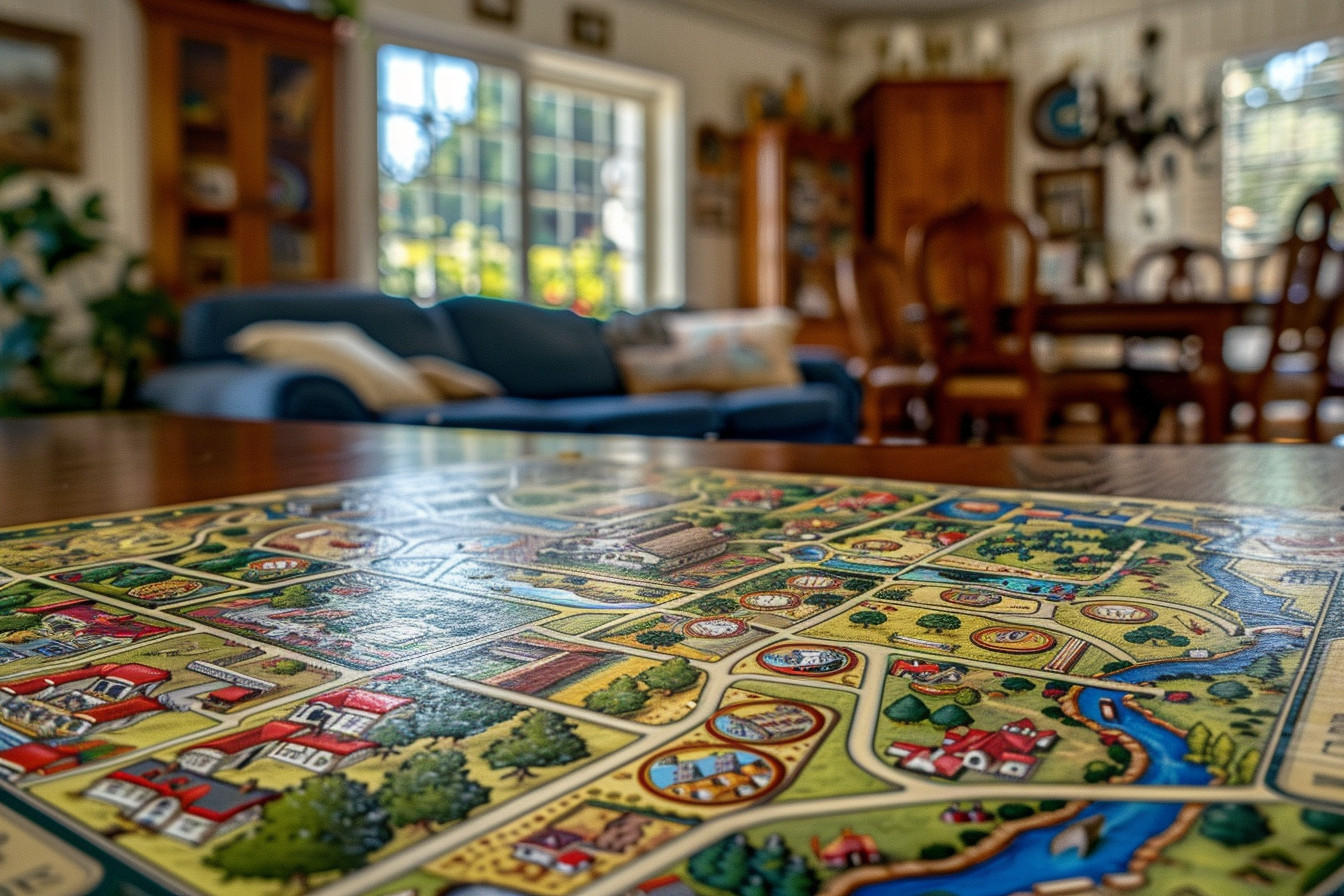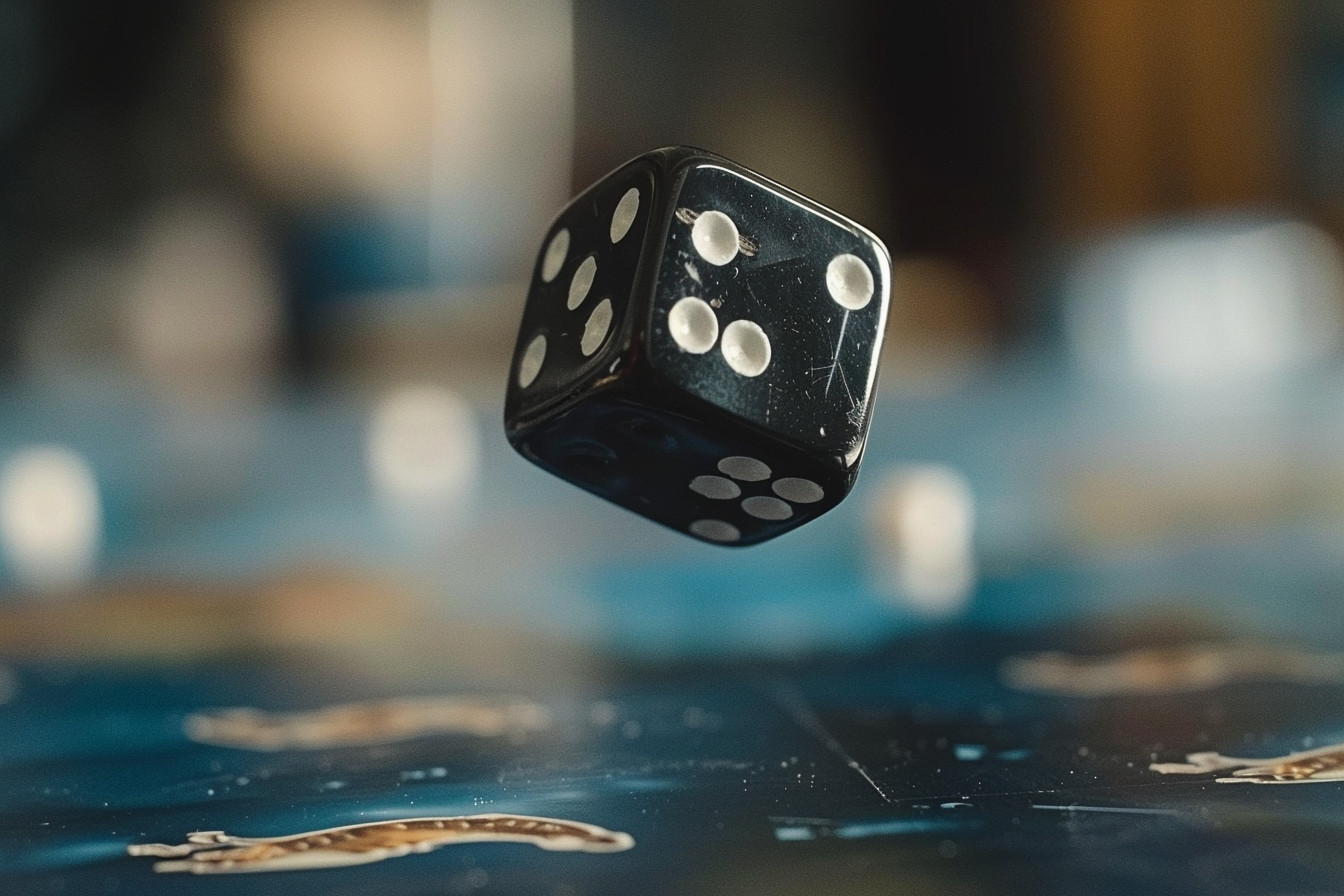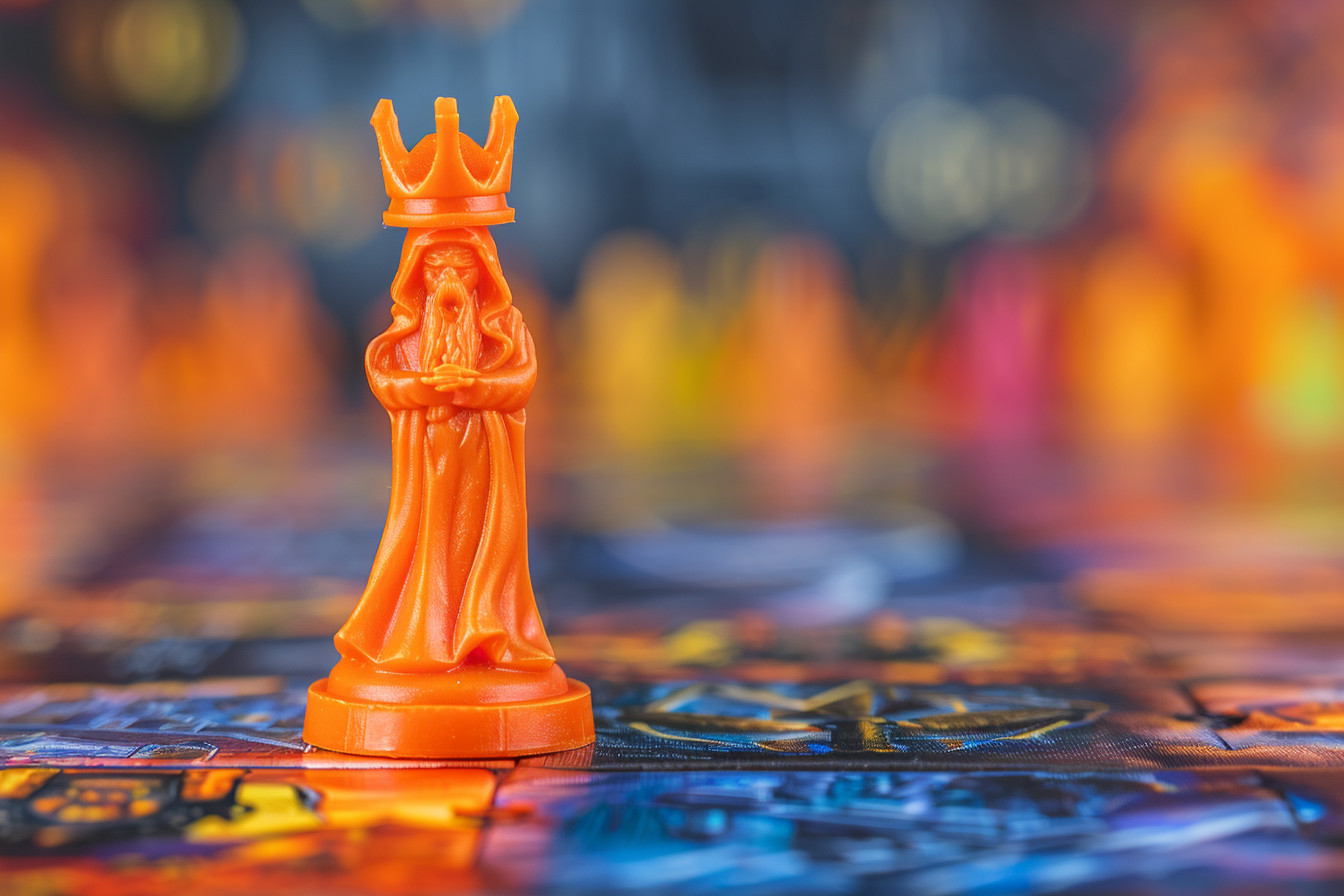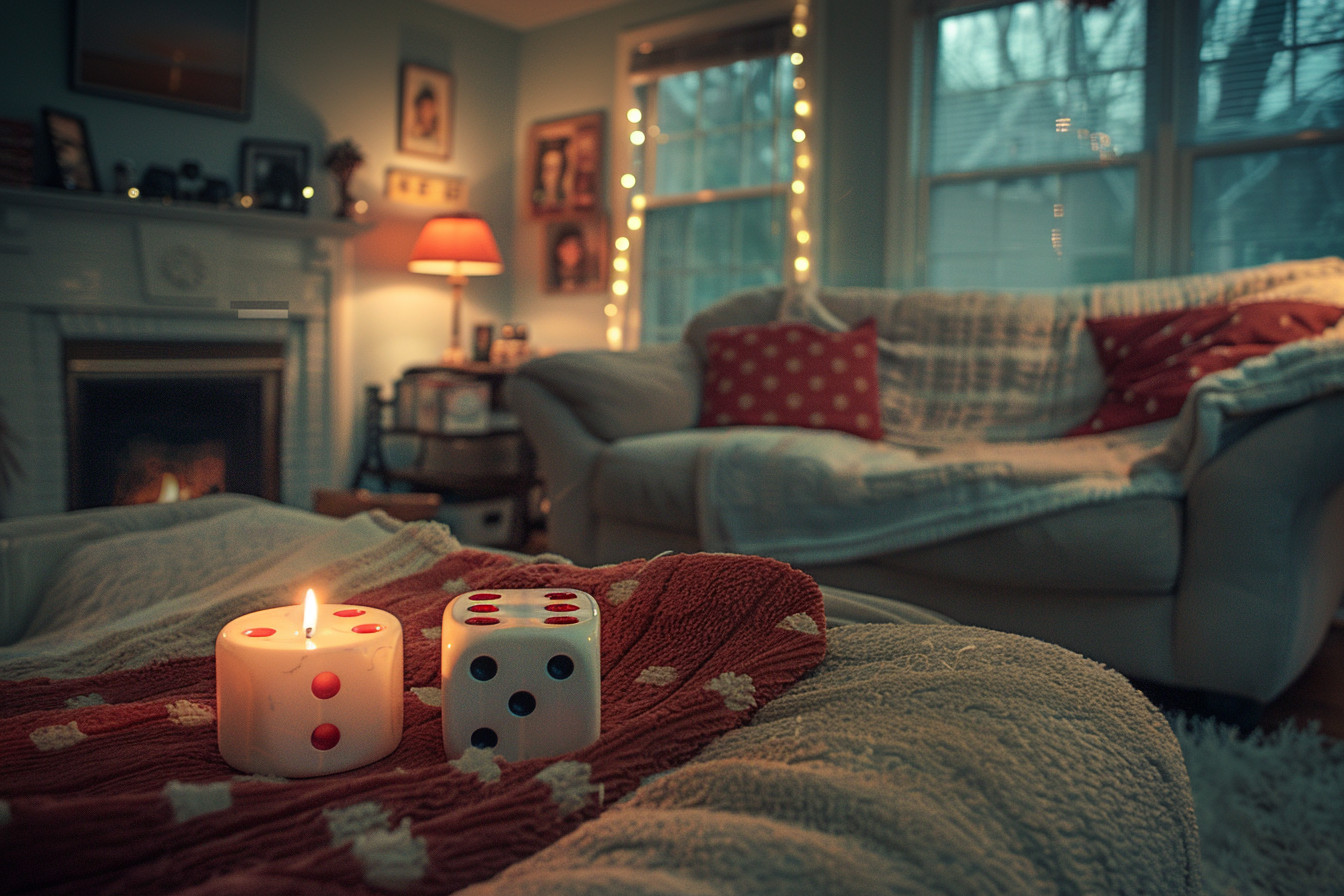The board game Mysterium is a winner of the special award for the most beautiful game of 2015. Its designers, Oleksandr Nevskiy and Oleg Sidorenko, have made a meandering, but captivating, murder mystery world the setting of this spirits-and-mediums game. Once again, the unorthodox method in which one plays—wholly unlike any other game I’ve encountered—makes this an amazing experience to sit through. Mysterium seance-like experience storytelling needs a lot of help from one’s imagination to make the narrative work. That’s good, isn’t it?
One player becomes a ghost; the others are psychic detectives working together toward a common goal. The ghost’s job is to steer the psychics toward the solution of a murder using only the simplest tokens of communication: a hand of cards with dreamlike, sometimes bizarre images on them meant to nudge the detectives toward the correct combination of choices — which one serves as the murder weapon, the ghost’s choice from among the game’s nine possible outcomes. The detectives have the same sort of intuitive conversation appearance at a séance. The only difference is that their words can’t appear to come from a Ouija board.
The truly special aspect of Mysterium is the immersive, atmospheric, and even haunting experience it provides. The artistry in this game is electric! The Artist players are given a detailed, imaginative set of illustrations rich with symbolism that draw us into their macabre, dreamlike setting. This is a cooperative, visually oriented game, and thus it makes us that much more likely to engage with it and with each other at the table. As a veteran of many a game night, I can verify that Mysterium consistently delivers the wonder and excitement one hopes for from an evening spent in the company of friends and family, with few or no duds.
The game boasts high replay value. Across different playthroughs, the identity of the murderer, or the character involved in the event triggering the game, can change dramatically. Combinations of different weapon cards (switchblades, lead pipes) and room cards (billiard room, bar) can form unique crime scenarios, with the identity of the murderer never quite the same from game to game. The rulebook suggests a formula for creating safe scenarios (“Never pick the same murderer twice in a row, etc.”) that keep the game’s secret narrative structure intact.
The first order of business is to select the person who will be the ghost. The ghost player is the one who does the most to drive the action forward.
This is a game of detectives, and the detectives need to have some leads to follow up. If the detectives are fumbling around aimlessly, that doesn’t lead to a good play experience. The ghost can’t just sit wordlessly if the investigators aren’t making any progress toward figuring out the culprits. But the ghost also can’t simply blurt out, “Go look in the Topiary Garden!” if investigator No. youssarian (for example) is stuck and can’t get un-stuck.
The phantom next chooses a set of culprit, location, and weapon cards from the card decks. The set’s size (and the game’s difficulty and length) depends on the number of people who are playing CLUE. The best part of this version of CLUE is the great amount of game-to-game and within-game variability. With seven weapons, six unique culprits, and 20 possible locations, there are 840 possible solutions! Even if you somehow manage to play CLUE every single day, you’d have to play for more than two years to get through every combination!
The game board is broken into three parts: one for suspects, one for locations, and one for weapons. The board has a definite place for the selection of the culprit, the location, and the weapon in the crime. The ease of determining the true nature of the crime can be increased or decreased by the number of cards laid out in play. Investigators are then dealt cards from a special “case deck,” which contain the clues that will lead them to either solve or fail to solve the mystery.
Every player is given a set of tokens that match the color they have chosen to play with. The players use these to indicate, on the board, which character they think is the culprit. They also receive what’s called a “clairvoyance” marker, and they use these markers to indicate whether they think the other players’ character predictions are right or wrong. These, too, are placed on the board. Little if any information is exchanged verbally here. This is a very quiet stage of the game, and it has a delightfully tense air.
Another way I heighten the environment is by lowering the lights and putting on eerie, ambient tunes. You don’t have to do this. It’s not required, but it really helps. I promise. I have this one nugget of a memory—I don’t even remember what the context for this game was, meaning I’ve forgotten the rules to whatever game we were playing. But I recall, with perfect clarity, that all of us at the table were utterly engrossed. My setup—with the music and the ‘candlelight’—had worked to make that game one of the most enthralling experiences of not only my life but the lives of my friends as well.
How to play
First, put the clock board in the middle of the table and set the clock hand to the first hour. The game takes place over seven rounds, and the clock board helps you keep track of this. It’s like a big board game timer. Once the game parts are all set up correctly, the vision cards are what’s next. I really think you ought to shuffle them until you’re content. Once the vision cards are in place on the “here not revealed” crow’s nest and the game is all set up, we can start to roleplay.
Where the real sorcery occurs is in the playing of the game. No, really. You’re the ghost, and you’ve got a raft of these really gorgeous vision cards. You’re trying to get the mediums to guess their assigned combinations of characters, locations, and weapons. To do that, you’re using these vision cards—sometimes one, sometimes more than one—that are way more than just pretty pictures. They’re packed with symbolism. Your job is to pick out the ones that are going to nudge the mediums toward the right card selections.
At the onset of every game round, the ghost pulls a hand of seven cards from their vision deck. This deck is the ghost’s sole form of communication for the course of the game; each card is an illustration filled with detail and potential clues. Now the ghost makes crucial decisions: Which cards should be given to which investigator? Should the investigators start the game with a suspect or a weapon in mind? Should the ghost complicate things later for the game’s murderers, when the players are inherently working as a single team with the opportunity for individual ‘visions’ to happen, or not happen, as the results of the game play out?
When the ghost hands out the vision cards, we, the investigators, take a good look at what we’ve been given. We pay close attention to everything on those cards because when we were little and our parents told us to pay attention, it wasn’t so that we’d grow up to be detectives; it was so we’d grow up to be functioning, you know, like, normal human beings. But here we are. We’ve got decks of cards spread out, and we’re hunched over; we’re using the fingers from our left hands to hold up one card while the fingers from our right hands peruse another card.
Adding the clairvoyance tokens makes the game strategy go even deeper. Every player is limited to a certain amount of tokens, which are for use in the reading phase of the game. Whenever the psychic reads your fortune, you can use a token to essentially bet on whether or not they’ve gotten your guess right. This brings a more interactive element to the extrapolations and encourages more spirited debate amongst players.
Once everyone has taken a stab at who they think the ghost was in life, the ghost lets them know if they’re right. If a player has accused the ghost accurately, then that player proceeds to the next round. However, if the player was wrong, then the player receives new vision cards. Once again, the ghost knows what those new vision cards mean. If the living thought someone in teal made a great ghost, then they probably found out if they were right or wrong as soon as the Color phase ended.
In the end, the true murderer had to be identified from among those who had correctly guessed. The ghost still had the last means of communication in the forms of new visions that were meant to, hopefully, lead the group to the correct combination of person, place, and weapon.
Mysterium’s gameplay is effectively a wonderfully constructed communication-and-deduction ballet. The “ghost” gives the silent treatment, and the “investigators” gain the collaborative narrative that happens with every vision until the end of the game. This is a really cool and enjoyable tabletop game. And the rules and structure create a (nearly perfect) space for a potentially interesting act of collaborative deduction to take place.
The enduring appeal and popularity of Mysterium stem from several key strengths. The most notable is the immersive experience it offers. This is a game with some serious atmosphere. Its setting in a haunted mansion is richly evoked, and the stunning vision card artwork that forms such an important part of its mechanics fills out every corner of that world with intricate and suggestive detail. The vision card art—and there’s a lot of it, as you’ll see when you play the game—is so potent, you might want to pipe tobacco like Vincent Price whilst pondering its meanings.
The game’s accessibility is a massive plus. Mysterium may be a deep and complex experience, but the game is just as easy for a new player to pick up as a tired old warhorse. The rules and mechanics of the game can be learned in less than 10 minutes—and when taught by an experienced ‘in-group’ player to an ‘out-group’ newcomer, the game unfolds at a pace that doesn’t feel burdened by an excessive amount of competitive tension.
Another good reason to keep playing Mysterium, apart from the fun, is replayability. It has a large number of vision, culprit, location, and weapon cards. When you start a new game, it’s unlikely you’ll encounter the same murder mystery scenario. Moreover, it’s not just the six mediums that might get to be the ghost; any player can take on the role of the ghost. It is easy to see why this board game is beloved, and why it just demands to be played over and over…because it’s amazing what you get to do each time.
One thing that immediately stands out about Mysterium is how much of a cooperative game it is. Of course, almost all board games demand that you at least work with one other person, if not more, but Mysterium takes “cooperative gaming” to a whole new level for me. You can even make an argument that it is one of the most “cooperative” in the burgeoning genre of cooperative board games. And the whole point of a cooperative game is to exude an aura of teamwork, right? Couple this with how flat-out exhilarating Mysterium is to play and you’ve got a thing of pure beauty.
Mysterium is an incredible mix of strategy and creativity. The ghost has to think very, very hard about what cards to give to the psychics, and no one on the other side of the table is going to be helpful. After the ghost helps the psychics up to the table, the psychics then have to interpret the cards they receive with their imaginations. Logical deductions and the imaginations of the players then set up for a great ending where the players confront the single, most important vision of the game.
In the end, Mysterium’s quality of production is simply outstanding. Everything about this game is beautiful, from the sturdy box to the wonderful game pieces that come inside it. The game’s illustrations are fantastic; the suspect, location, and weapon decks all have different and more-than-unique illustrations that make those decks look and feel very much like the isolated, Impressionist-era crime scenes you’re trying to solve. These cards are so lovely, in fact, that you could take Mysterium out of the box, hang its cards on your wall, and declare confidently that you’ve just put up some great art.








